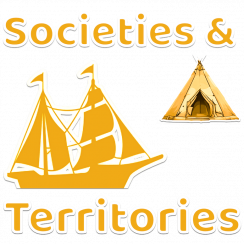A changing way of life
The ways of life of Indigenous Peoples continued to change—diseases, including a smallpox epidemic from 1818 to 1821, impacted many Nations. Europeans brought a lot of these new diseases.
Indigenous Peoples worked to retain their ways of life. As more and more people immigrated to Lower and Upper Canada, Canadian customs emerged and were sometimes infused with Indigenous customs or enforced on members of different Indigenous Nations. For example, some Indigenous Nations gradually shifted from nomadic lifestyles or traditional shelters to more ‘Canadian-style’ homes and lifestyles.
New economic activities
The fur trade, which had been an important economic activity for Indigenous Peoples, was now in decline. Furs no longer sold well, and intensive hunting led to declining animal populations. It became increasingly difficult for Indigenous People to make a living from the fur trade.
Those who depended on hunting and fishing now had to make do with smaller hunting lands because the government had given more and more of the land to colonization and logging (for the timber trade).
Indigenous People adapted to new situations and economic realities. Many became forest or agricultural workers. Others became employees of businesses like the Hudson’s Bay Company or started making handicrafts to sell at the market.
Author: Alexandre Lanoix; text updated by the Service national du RÉCIT en univers social and LEARNSee also – Traces of the past:




